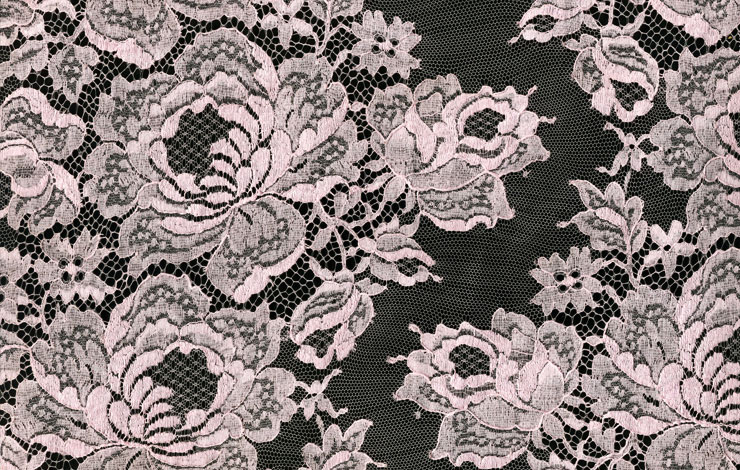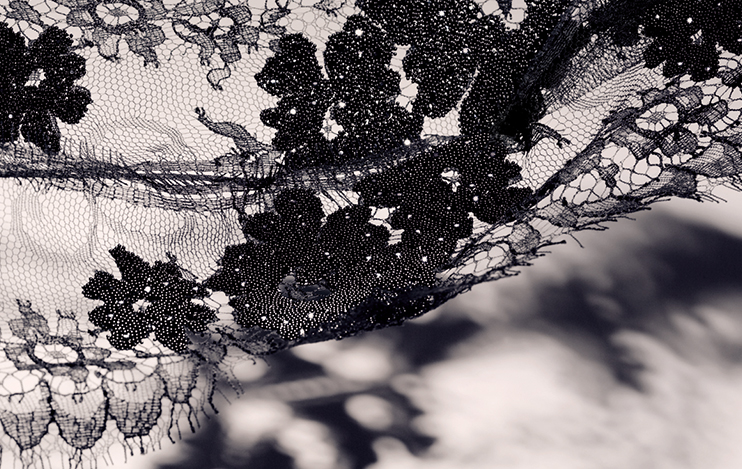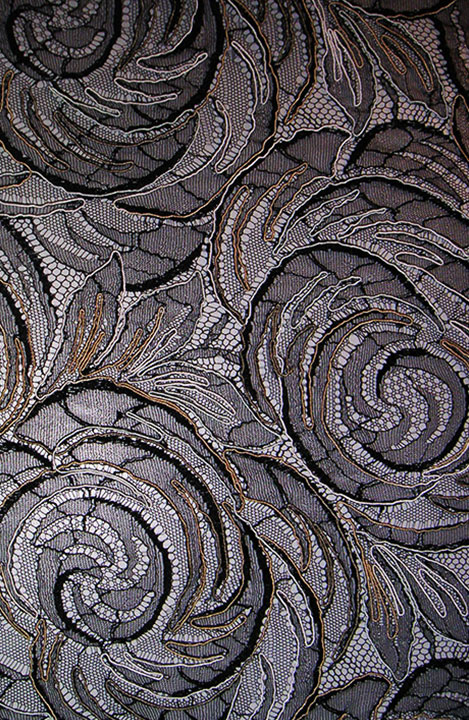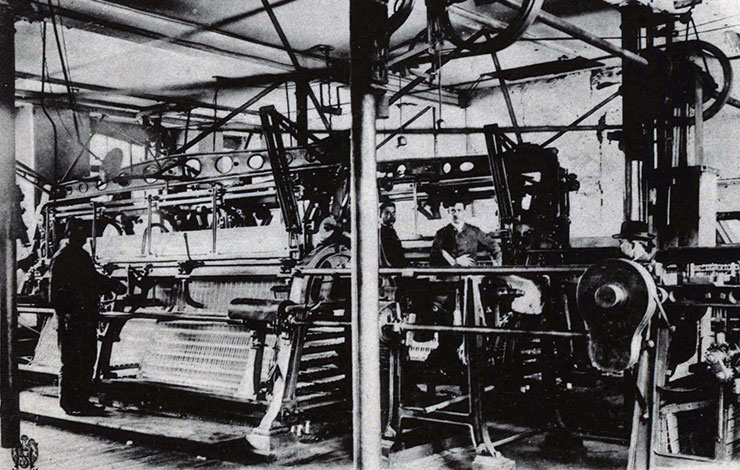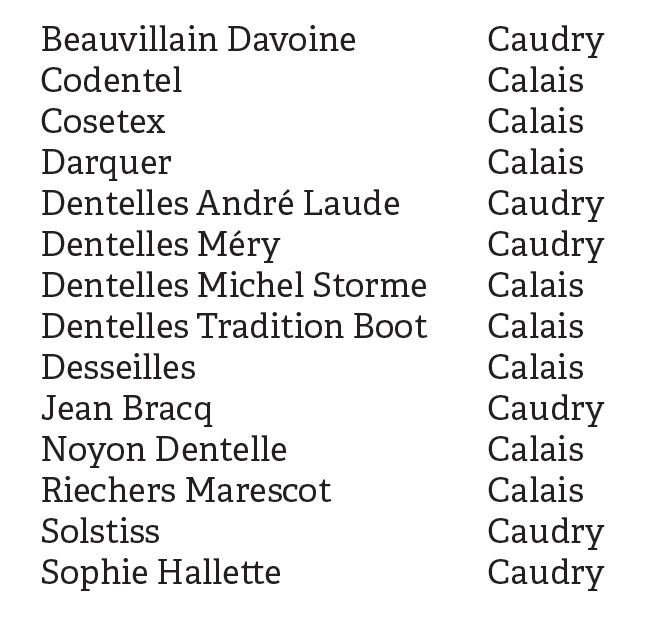Discover the Dentelle de Calais-Caudry in Shanghai
In 1808, British inventor John Heathcoat pioneered lacemaking machinery in Nottingham that was improved upon five years later by John Levers. Though the British government had banned the export of the machines, one was smuggled to Calais in 1816 and the rest is history.
While the Leaver loom initially only made tulle net, it was adapted to incorporate a mechanism developed by French weaver and merchant Joseph Marie Jacquard, who had created in 1801 the Jacquard punched-card loom, a power loom that simplified the manufacturing of complex textile patterns like damask and brocade. The incorporation of the punched-card mechanism created the most versatile machines for patterned lace, capable of imitating the handmade lace of highly skilled workers.
At its peak in 1905, Calais had over 500 mills, 3,000 machines and 40,000 workers making some of the most sought-after lace in Europe.
Nowadays, only 14 lace manufacturers (list on the left) can claim to create under the label Dentelle de Calais-Caudry, as it was officially trademarked in 2015 (to replace the 1958 label Dentelle de Calais) and examples of their creations will soon be touring the world, starting with the Museum of Contemporary Art (MoCA) Shanghai on March 22.
The Dentelle (lace) Leavers mix traditions and innovations to produce motifs, styles and techniques directly inspired from the diverse handmade laces from the regional (Chantilly, Valenciennes, Alençon), combining these age old motifs with new textiles and The Lace Review exhibition aims to showcase the savoir-faire and creativity of these small maisons, which are considered tenets of the haute couture and luxury lingerie industry.
The lace making process is a lengthy one that require precision, dexterity and different savoir-faire: A drawer will need to translate an initial sketch into a ready for manufacturing - working design, mapping every thread on cardboard cards necessary to guide the loom as it weaves (The threads must continually progress in one general direction and can’t “retrace” their steps). Ahead of the weaving, the loom and the bobbin has to be carefully prepared. Once the tulle is made, some patching up might require to make any defects disappear, and a finally scalloping to separate the curved borders of the lace pieces from each other will need to be done by hand.
Currently, one of the most sought-after lace house by couturier is Maison Sophie Hallette which was rose to international attention when Marilyn Monroe was seen wearing a white bustier dress made of lace from the Hallette workshops in 1953. Jackie Kennedy also wore a black Leavers lace mantilla from the maison in 1962. More recently, lace from Maison Sophie Halette was used on the Alexander McQueen wedding dress of Catherine Middleton, the Duchess of Cambridge, as well as the Oscar de la Renta wedding dress of Amal Alamuddin.
